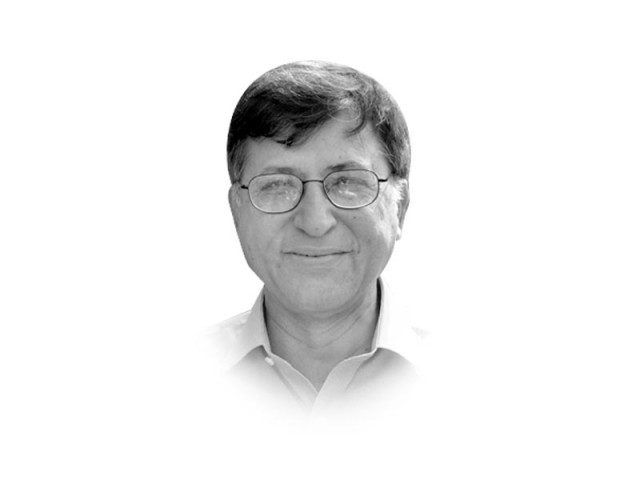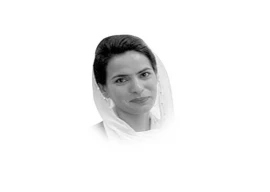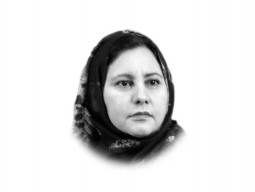
What turned an idyllically clean and peaceful city of earlier decades — one that I grew up in and loved — into today’s hell-hole? Is there even a remote possibility that Karachi can once again give safety, security, and a wholesome existence to the majority of its people? Perhaps the science of behaviour just might help us understand what went wrong. Finding solutions is, however, a different matter.
Scientists who study fish habits say cramped aquarium conditions hugely increase fish-on-fish violence. When the tanks are large enough, or the fish few enough, the inhabitants are perfectly peaceful; the fish flutter their eyes as they sweetly swim past each other. But keep adding more, and bumps become frequent. They now flare fins to convey annoyance. Road rage from close encounters builds and ultimately many are driven to pester, injure, and even kill their fellow tank-dwellers.
A recent pioneering study says fish need their space — and they become upset when it isn’t there. Ronald Oldfield, the biologist who did the research, says that fish in their natural ecological environments sometimes aggressively compete for food or shelter. But in an aquarium such resources are not scarce. Why then, he asked, does one observe aggressive behaviour?
The answer turns out to be that aquarium fish are driven by two goals: they want to increase access to available space (corresponding to the size of the fish tank), and to the amount of habitat complexity (corresponding to the presence of obstacles and hiding places like rocks and plants) within the tank. As more fish are added, these become less available. Each individual becomes more defensive of its tiny alcove. Signs of aggression usually start at a low simmer. Then fins start flaring and, ultimately, the anger boils over.
Okay, maybe fish are very different from humans. So how does it work for mammals? In a paper entitled “Housing and welfare in laboratory rats: effects of cage stocking density and behavioural predictors of welfare”, researchers at the University of Nottingham find closely similar results. Although the confined rats are adequately fed, too many packed together results in a hatred for their fellow beings.
Confined females have the roughest deal: “Density had a very highly-significant effect on the total frequency of aggressive acts initially received per female. Chewing at cage bars showed particularly strong correlations with aggressive social stress and with pathophysiological responses… individuals in single-sex groups experiencing a high degree of social stress in the form of aggression received, spent less time sleeping and more time exploring the enclosure and attempting to escape.”
Now let’s read the above in the context of Karachi: a city with few parks, little amusement, stifling summer heat, unrelenting traffic noise, loud apartment-block neighbours, segregation and sexual frustrations, polluted air, dirty water, no toilets for millions, and frequent electricity breakdowns.Unsurprisingly, Pakistan’s supposed melting pot has turned into a boiling cauldron of hate and anger. Put a lid on it if you will, but a volcano cannot be capped.
Of course, the above is not the whole story. Critical as the population factor is, an explosive mix requires other elements too. After all, mega cities of similar size exist elsewhere — New York, Tokyo, Bangkok, Shanghai, Bombay, etc. But their violence, while significant, is nowhere comparable to Karachi’s. What sets Karachi apart?
Local politics matters much. In 1995, Eqbal Ahmed wrote that “Karachi is starved of the wealth it generates. The city contributes more than sixty per cent of the federal and Sindh governments’ revenues. Only a fraction of it is invested back in building its infrastructure. To make matters worse, under successive Karachi governments, land and other resources have been prey to the greed of those in power.”
Well, ditto for today. The difference is that Karachi was about nine million when these lines were written; today it is estimated at around 19 million. Rural to urban migration is a component, but the explosive growth is countrywide. The area that is now Pakistan had 28 million in 1947.But in 2011, according to a yet-to-be published survey, it held a staggering total of 192,288,944.
A dysfunctional state that cannot provide essential infrastructure, religious parties that oppose birth control, and an uncaring elite are squarely responsible for Karachi’s descent into chaos. In this cesspool of frustration and human misery, average household monthly incomes are estimated at a paltry Rs3,000-6,000 with most new immigrants being irregularly employed as labourers. This creates the ideal habitat for different varieties of criminal and extortionist groups, as well as political parties with paramilitary wings.
Sindhis, who formed the bulk of Karachi’s population before Partition, now no longer matter. But it is now the turn of the mohajirs, who had displaced them, to be worried. The MQM, fearing that the city will escape its control, tries to make the city unwelcome for a flood of Pakhtuns flowing in from the north. The MQM’s rival is now the ANP, which went silent on its socialist rhetoric a long time ago. It is now a frankly ethnic party operating in a city which is now 20-25 per cent Pakhtun. But the violence of the MQM and ANP cannot compare with that of the TTP, now steadily moving into Karachi. Its avowed goal is to destroy everything first and then capture state power.
A recommendation: the next time Rehman Malik says that some hidden hand is setting Karachi ablaze — or when Imran Khan, Munawar Hasan, and Hafiz Saeed lay the blame upon America or India — just tell them about the fish and the rats. Those who breed like flies die like flies.
Published in The Express Tribune, April 9th, 2012.















COMMENTS
Comments are moderated and generally will be posted if they are on-topic and not abusive.
For more information, please see our Comments FAQ